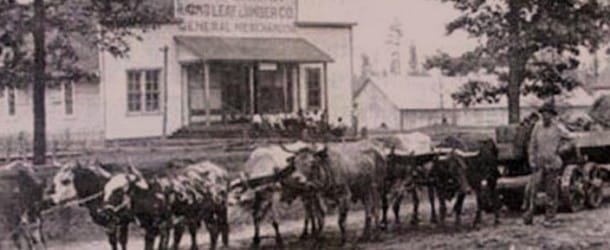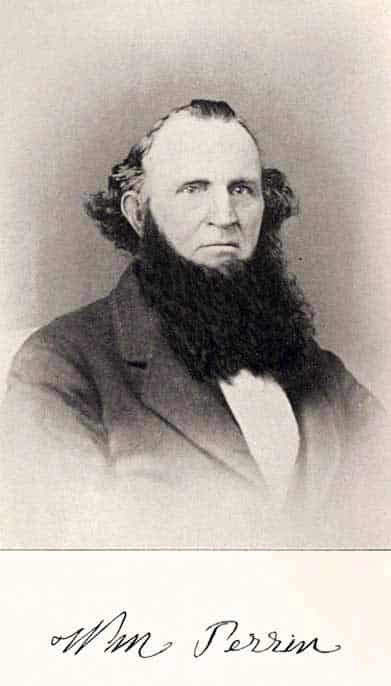Westlake began to come into being 200 years ago, when Calcasieu River was called Rio Hondo, and both Texas and the Spanish administrators of the Louisiana territory were laying claim to the lands between the Calcasieu River and the Sabine River.
Many pioneers tried to get into the strip of land in the early years of the 19th century to stake their claim on the disputed territory. One of these was Reese Perkins, who built a ferry that ran from the west bank of Calcasieu River to the east.
Perkins was a prominent pioneer in Calcasieu Parish. He eventually became justice of the peace of the area that was just beginning to be called Calcasieu.
But what may have interested him more than the law of the land was the cattle route of the Gulf Coast.
Perkins built the ferry across Lake Charles to enable ranch owners to move their cattle from Texas to New Orleans and back. It was said that as many as 2,000 head of cattle crossed on this ferry in a day. It was a lucrative trade, and it wasn’t long before a village sprang up around the west bank of the ferry.
Two investors worked as partners to organize the settlement, which, at first, was called Lisbon. One of the partners, a fellow named Holt, sold all his lots and left town. The little town was struggling in spite of the brisk cattle trade that wound through it.
It was renamed Bagdad. And fast and loose finances continued to plague it. One common complaint was that the ferry rates were prohibitively high. Because of the high rates, it was alleged, many cattlemen took their cattle far to the north — through the town of Lecompte, near Alexandria — rather than through Lake Charles (or the little town of Bagdad, for that matter).
One disgruntled citizen, the 19th century American historian William Henry Perrin, complained about the ferry: “The authorities of our parish have permitted ferries to tax the traveling public at so high a rate that farmers haul their produce two or three times as far as otherwise necessary in order to avoid the enormous expense of ferriage. Can this parish afford the enormous and continuous loss of trade this involves?”
Perrin pointed out that in Vermillion Parish, whose population, he noted, was significantly less than that of Calcasieu Parish, ferries ran free of charge.
He declined to accuse any one person or group of making the ferry at Bagdad a monopoly. But he did try to rally the citizens to action. “Let the people come to the front and demand justice …” he wrote in one passage of rousing prouse.
Ferry Problems, Name Problems
A mile south of Bagdad was the fledgling town of Westlake, which would come to have its own ferry troubles. In Westlake, the same accusation of monopolizing of ferries were leveled, and it was felt that the high rates might almost have been designed to keep people from using the ferries.
Westlake had a few troubles with its name as well. Traditionally, the settlement had been called “West Lake Charles.” The story, whether true or false, was that the postal officials were opposed to the designation of a large area as “west” something or other.
Town leaders resolved the problem by dropping the “Charles” and combining the first two words to create a new one — “Westlake.”
Early settlers of Westlake were of a mix similar to that which is still dominant in Lake Charles; settlers came from a number of European countries and northern sections of the U.S.
They were as likely, in the early days, to travel by water as they were to take their chances with the primitive roads.
It was water that gave Westlake its primary source of income for the 19th century. Westlake residents helped lumber men load their products onto ships, which then sailed down the Calcasieu and eventually docked in Texas or the Caribbean.
New Industry Arrives As The Old Departs
Fortunately for Westlake, by the time the lumber industry in Southwest Louisiana was exhausted, the railroad enterprise was becoming profitable. Surveyors determined that the route of the Louisiana Western Railroad, which would later become part of the Southern Pacific Railroad, would run through Westlake.
While Westlake shared Bagdad’s early problems with town names and ferries, it avoided the smaller town’s problems with organization. An engineer named James Kleinpeter organized the area in and around Westlake according to a method that used square acres.
In 1888, Allen Perkins undertook the subdivision of all the plots and did so in a completely straightforward manner. Perkins became “the father of Westlake” and Westlake became a going concern.
In his historical writings about Southwest Louisiana, which were published in 1891, Perrin called Westlake the “twin city of Lake Charles.” He stated that until recently, the town had not appeared on any maps. But, he claimed, by 1891 it was “growing and promising.”
One can see that it might have been a bit hard to gauge prosperity at a time when the bustling metropolis of Lake Charles had a population of only 4,000. But Mr. Perrin was an optimist. He wrote in his history of the area that “no warm country has so few insects.”
At the time of Perrin’s writing, Westlake was the home of the Perkins and Miller mill, the A.J. Perkins and W.B. Norris store, a Baptist church and the “saloon of H. Escubas.” The town offered a good view of the opera house in Lake Charles.
Although it would be more than half a century before Westlake would be incorporated, the settlement was assured of a future. Bagdad, on the other hand, has disappeared from the landscape so thoroughly it isn’t even possible to find a reference to it on the Internet. That is oblivion indeed.
The railroad must have helped the growing city of Westlake a great deal. And the replacement of ferries with bridges probably didn’t hurt any.

















Comments are closed.